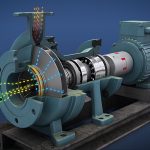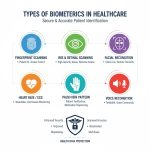Automotive Semiconductor Market Set for Robust Growth, Driven by EV Adoption and Advanced Electronics Integration
The global automotive semiconductor market is undergoing a transformative phase, shaped by the rapid evolution of electric vehicles (EVs), autonomous driving, and connected car technologies. Semiconductors play a pivotal role in enabling modern automotive functionalities, from advanced driver assistance systems (ADAS) to infotainment, safety systems, and powertrain electrification. The market is positioned for strong growth as automakers increase reliance on semiconductor-based solutions to deliver performance, efficiency, and safety. Rising demand for smart mobility, stringent emission regulations, and electrification initiatives worldwide are accelerating adoption.
Our comprehensive Automotive Semiconductor Market report is ready with the latest trends, growth opportunities, and strategic analysis. View Sample Report PDF.
Key Takeaways
- The global automotive semiconductor market is expected to reach USD 70.2 billion in 2024 and is projected to grow to USD 231.8 billion by 2035, registering a CAGR of 11.50%.
- Growth is driven by rising EV adoption, increasing demand for ADAS and safety systems, and expansion of in-vehicle connectivity.
- Power semiconductors dominate due to high usage in EVs and hybrid vehicles for battery management and energy efficiency.
- Key players are focusing on mergers, collaborations, and new product launches to expand portfolios.
Premium Insights
The industry is witnessing strong momentum with advancements in electrification, connectivity, and autonomy. EV demand is increasing semiconductor consumption, particularly in power electronics for battery management and charging systems. Safety regulations drive widespread ADAS adoption, requiring high-performance microcontrollers and sensors. Additionally, connected cars and infotainment systems boost demand for memory chips and communication modules. Industry collaborations between automakers and semiconductor suppliers are fostering innovation, while supply chain resilience remains a critical focus after recent global shortages.
In 2024, the automotive semiconductor market revenue is valued at USD 70.2 billion, with projections reaching USD 231.8 billion by 2035, expanding at a CAGR of 11.50%. Demand growth is tied to EV penetration, which is forecast to grow significantly by 2035, and ADAS integration, which is becoming standard in vehicles across developed and emerging economies. The scalability of semiconductor innovations, such as SiC (silicon carbide) and GaN (gallium nitride) materials, is also expected to boost growth.
The automotive semiconductor market is moderately concentrated, with major global players such as NXP Semiconductors, Infineon Technologies, Renesas, Texas Instruments, and STMicroelectronics leading the space. These companies dominate through broad product portfolios and strategic alliances with automakers. The market is highly competitive, with frequent technological advancements, partnerships, and mergers shaping the landscape. Key characteristics include high R&D intensity, stringent quality standards, and cyclical demand patterns influenced by global automotive production trends.
For Automotive Semiconductor Market Research Report and updates detailed: View Full Report Now!
Component Insights
The component segment includes sensors, cameras, radar, software, and control units. Sensors and radar dominate due to rising demand for collision avoidance and adaptive cruise control. Software advancements are enabling integration of AI and machine learning, enhancing system accuracy and response, fueling further adoption across vehicles.
Vehicle Type Insights
Passenger vehicles lead the DAS market, driven by growing consumer demand for safety and comfort. Commercial vehicles are rapidly adopting advanced driver assistance features due to government regulations for fleet safety, accident reduction, and operational efficiency. Luxury vehicles integrate high-end DAS technologies, setting benchmarks for innovation.
Fuel Type Insights
Electric vehicles (EVs) are a major growth driver for DAS adoption, with autonomous features being key differentiators. Hybrid vehicles also integrate DAS for efficiency and safety. Conventional fuel vehicles still hold significant market share, particularly in developing nations, but face increasing regulatory pressure for adopting safety technologies.
Application Insights
Applications include adaptive cruise control, lane departure warning, blind spot detection, parking assistance, and automatic emergency braking. Parking assistance and collision avoidance systems are witnessing high adoption, particularly in urban environments. Automated braking and lane assistance are gaining traction with stricter safety norms from regulators worldwide.
Regional Insights
North America in Automotive Semiconductor Market Trends
North America benefits from strong technological innovation and adoption of EVs, particularly in the United States. Government incentives for EV adoption, rising demand for autonomous driving features, and integration of advanced infotainment systems are fueling semiconductor demand. Collaboration between automakers and semiconductor firms, along with investments in domestic chip manufacturing, is strengthening regional resilience and competitiveness.
Europe in Automotive Semiconductor Market Trends
Europe leads in EV adoption and regulatory-driven innovation, with stringent CO₂ emission targets boosting semiconductor integration in electric and hybrid vehicles. The region’s strong focus on safety, digital mobility, and autonomous driving fosters demand for advanced sensors and microcontrollers. Germany, France, and the UK dominate due to strong automotive manufacturing bases.
Asia Pacific in Automotive Semiconductor Market Trends
Asia Pacific holds the largest market share, driven by China, Japan, and South Korea as global automotive and semiconductor hubs. High EV production, government support, and rapid expansion of consumer demand make the region a growth engine. Local semiconductor firms are gaining prominence, while global suppliers strengthen ties with Asian automakers for long-term growth.
Latin America in Automotive Semiconductor Market Trends
Latin America is witnessing steady adoption of automotive semiconductors, particularly in Brazil and Mexico, which serve as manufacturing hubs for global automakers. Demand is driven by gradual EV penetration, safety regulations, and infotainment integration. However, economic fluctuations and slower technology adoption compared to developed regions slightly restrain growth.
Middle East & Africa in Automotive Semiconductor Market Trends
The Middle East & Africa market is at an emerging stage, driven by rising demand for luxury and connected vehicles in wealthy Gulf economies. South Africa leads adoption in Africa with a growing automotive sector. Investments in smart mobility and gradual EV adoption present growth opportunities, though infrastructure limitations pose challenges.
Top Key Automotive Semiconductor Companies:
- NXP Semiconductors
- Infineon Technologies AG
- Renesas Electronics Corporation
- STMicroelectronics
- Texas Instruments Incorporated
- ON Semiconductor
- Qualcomm Technologies
- Micron Technology
- Toshiba Corporation
- Broadcom Inc.
These companies invest heavily in R&D, collaborate with OEMs, and focus on next-generation technologies like SiC and GaN power devices to meet growing automotive requirements.
Recent Developments
- Infineon launched advanced SiC-based power modules to improve EV efficiency.
- NXP expanded its automotive-grade microcontroller line for autonomous driving applications.
- Qualcomm introduced AI-powered automotive platforms enhancing infotainment and telematics.
- Renesas partnered with EV manufacturers to supply scalable semiconductor solutions.
- STMicroelectronics increased investments in SiC wafer production to support EV adoption.
Automotive Semiconductor Market Report Scope
The Vantage Market Research report offers detailed insights into the automotive semiconductor market, analyzing drivers, restraints, opportunities, and challenges. It provides segmentation by product, application, end-user, and region, along with competitive landscape assessment, technological innovations, and regional growth patterns to support stakeholders in strategic decision-making.
Market Dynamics
Driver:
The DAS market is primarily driven by growing concerns for road safety, stringent government regulations on vehicle safety, and rising demand for advanced driver assistance features in passenger and commercial vehicles. Increasing consumer preference for vehicles with enhanced comfort, automation, and accident prevention technologies is accelerating adoption. Additionally, the growth of electric and connected vehicles is creating opportunities for integrating advanced DAS. Technological innovations in sensors, cameras, and AI-driven automotive software further enhance system reliability, fueling steady market expansion.
Restraint:
High costs associated with DAS components, including LiDAR, radar, and camera systems, pose a significant barrier to widespread adoption, especially in developing economies. Complexities in integration and calibration also increase maintenance and repair costs, limiting mass-market penetration. Concerns regarding system reliability, particularly in extreme weather conditions or poor infrastructure environments, further restrict adoption. Data privacy and cybersecurity issues linked to connected DAS features present additional challenges. Moreover, the slower adoption rate among low- and mid-segment vehicles restrains market growth potential.
Opportunity:
The shift toward autonomous driving and connected mobility creates significant opportunities for DAS growth. Rising adoption of electric and hybrid vehicles encourages integration of advanced safety features, while urbanization and smart city initiatives demand safer traffic management systems. Advancements in AI, IoT, and 5G enhance system efficiency and decision-making in real-time. Increasing partnerships between automotive OEMs and technology providers expand DAS offerings. Additionally, growing consumer awareness of road safety and increasing demand for premium, feature-rich vehicles unlock substantial market potential globally.
Challenges:
Despite its growth prospects, the DAS market faces challenges such as interoperability issues across vehicle models and varying global safety standards. Dependence on costly raw materials for sensors and semiconductors creates supply chain vulnerabilities. Ensuring DAS accuracy in unpredictable real-world scenarios, like mixed traffic or rural settings, remains difficult. Cybersecurity threats pose risks to connected systems, requiring robust defense strategies. Furthermore, consumer hesitation due to lack of trust in semi-autonomous features and slower regulatory approvals hinder widespread DAS deployment.
Global Automotive Semiconductor Market Report Segmentation
- By Component: Processor; Analog IC; Discrete Power Device; Sensor; Memory Device; Lighting Device
- By Vehicle Type: Passenger Car; Light Commercial Vehicle (LCV); Heavy Commercial Vehicle (HCV)
- By Fuel Type: Gasoline; Diesel; Electric/Hybrid Electric Vehicle (EV/HEV)
- By Application: Powertrain; Safety; Body Electronics; Chassis; Telematics and Infotainment
- By Region: North America, Europe, Asia Pacific, Latin America, Middle East & Africa
Frequently Asked Questions
Q1. What is the market size of the automotive semiconductor market in 2024?
The market is valued at USD 70.2 billion in 2024.
Q2. What is the forecasted market size by 2035?
The market is projected to reach USD 231.8 billion by 2035.
Q3. What is the CAGR for the forecast period?
The market will grow at a CAGR of 11.50% (2025–2035).
Q4. Which region dominates the market?
Asia Pacific leads due to strong EV adoption and semiconductor manufacturing hubs.
Q5. Who are the key players in the market?
Key players include NXP, Infineon, Renesas, STMicroelectronics, Texas Instruments, and Qualcomm.
![[Market Research Reports] – Research Google News Blog | VMR.Biz](https://www.vmr.biz/wp-content/uploads/2022/12/logo-removebg-preview.png)











